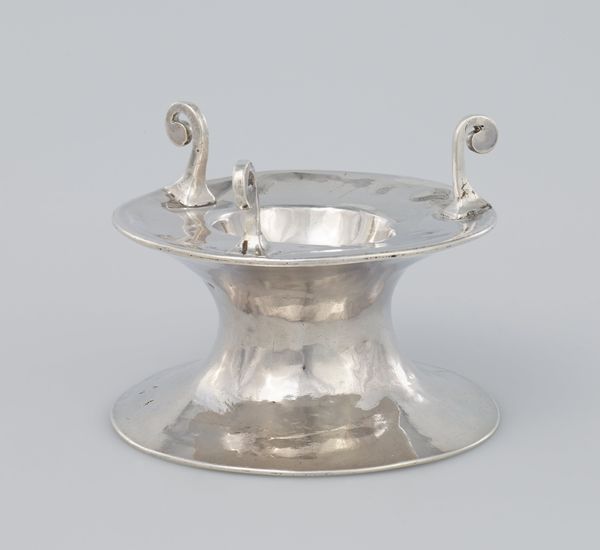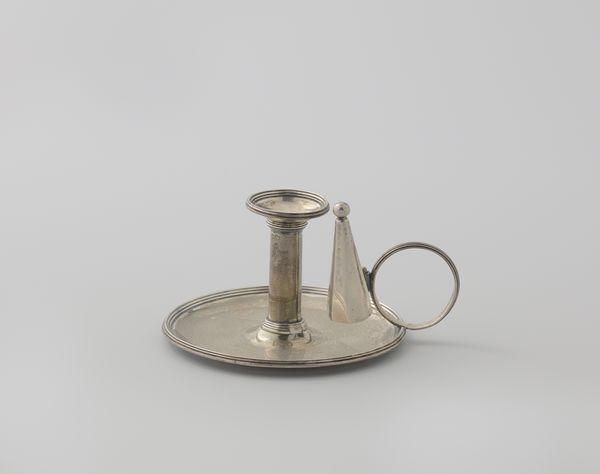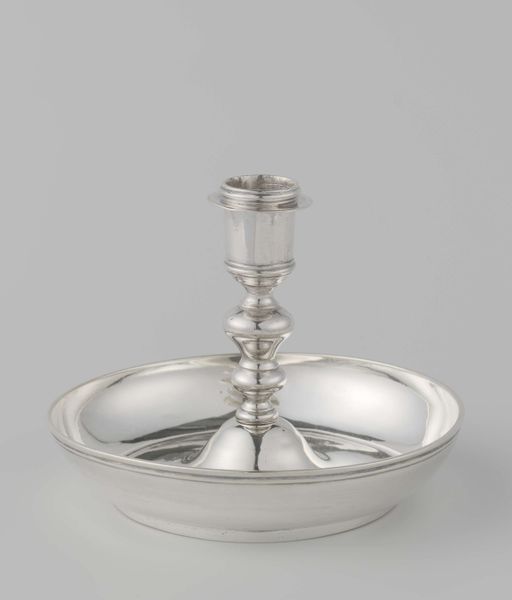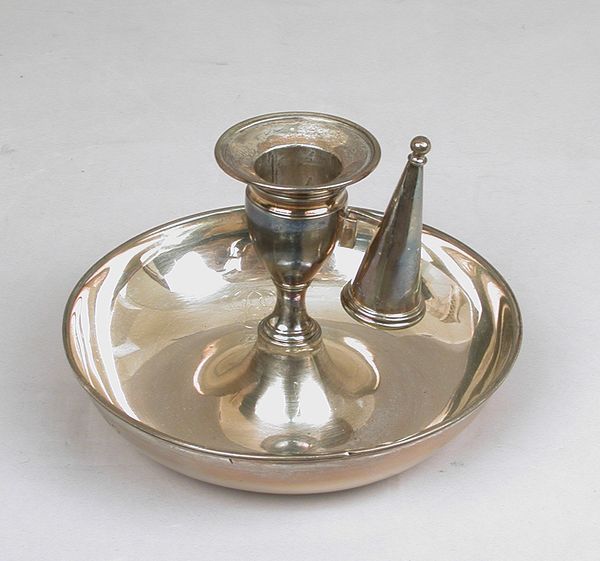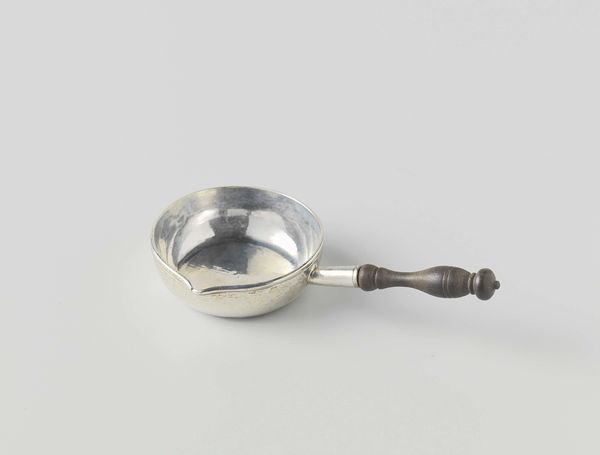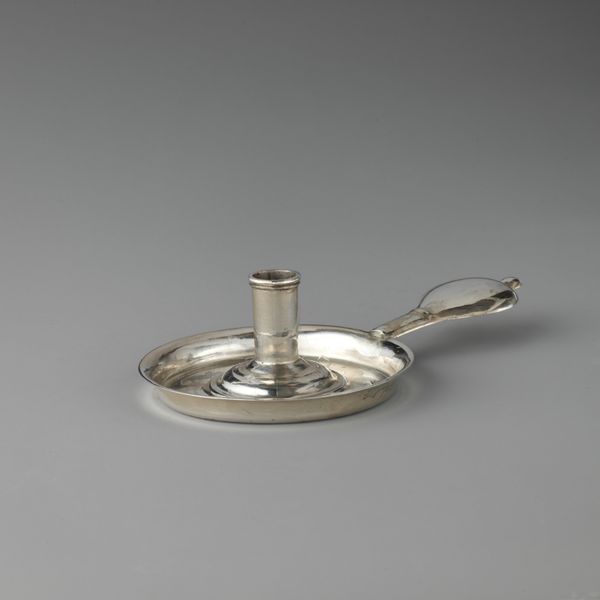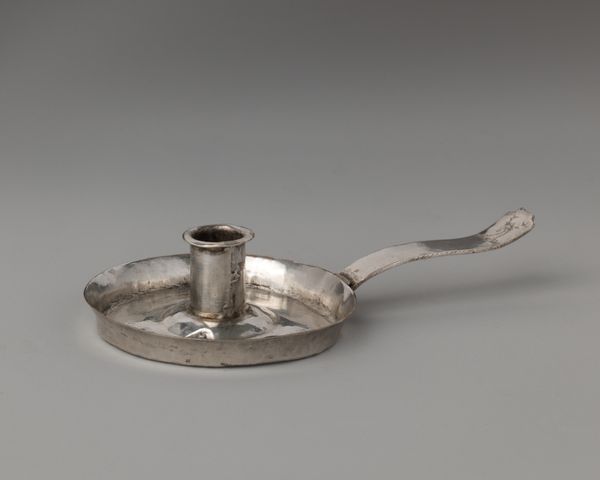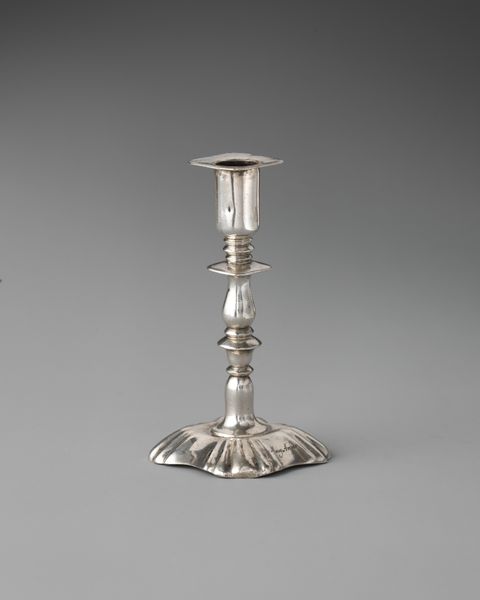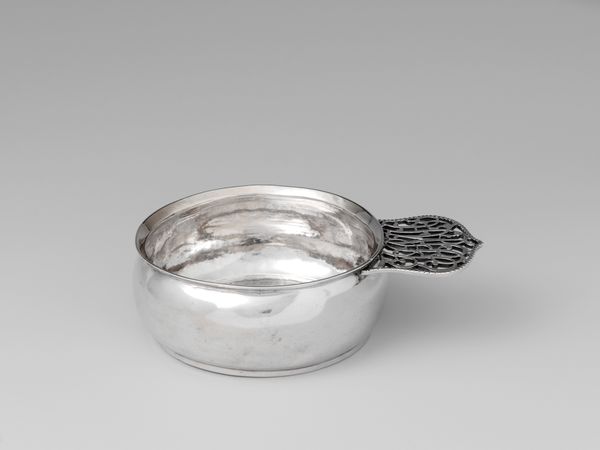
silver, sculpture
#
silver
#
baroque
#
sculpture
#
decorative-art
Dimensions: Overall (confirmed): 2 5/8 × 7 1/8 in., 12 oz. 19 dwt. (6.7 × 18.1 cm, 402.495g)
Copyright: Public Domain
Curator: Well, this silver chamber candlestick by George Wickes, dating from 1743-1744, certainly presents a striking object. It resides here at the Metropolitan Museum of Art. Editor: My first thought is simply, what remarkable craftsmanship. The eye is immediately drawn to its flawless, silvery surface. It gives the impression of opulence and restraint. Curator: Its Baroque elements contribute significantly to that effect. Note how the form follows function, enhanced with decorative flourish. Editor: Indeed. The Baroque loved a flourish. Can you speak to how pieces like this functioned within the domestic sphere of the time? It clearly wasn't designed for your average household. Curator: Of course. Objects such as these, particularly in silver, reflected status and societal role. A piece such as this was most likely created for a wealthy home, designed for servants to carry to light the way in dimly lit interiors or transport it to a boudoir before the person retires for the evening. Its purpose becomes intrinsically connected with expressions of wealth, and indeed, control of domestic space. Editor: Thinking about space and interiority... it prompts deeper consideration of candlelight itself during this period. This object mediated encounters with light, in turn governing experience, mood, and the rhythms of daily life for its owners. Curator: Very true, this brings a lot of meaning to what initially appeared as purely utilitarian. Its value goes well beyond the mere function of illumination. Editor: I’m thinking, too, about how the polish and maintenance of this object might reflect social rituals; the labor required and status displayed by something that looks simple, yet represents power through reflective appearance and functional elegance. Curator: Indeed. Considering it from multiple vantage points really showcases how history shapes design. Editor: Precisely. Examining these forms reminds us that they weren't just objects but complex expressions of social order.
Comments
No comments
Be the first to comment and join the conversation on the ultimate creative platform.
